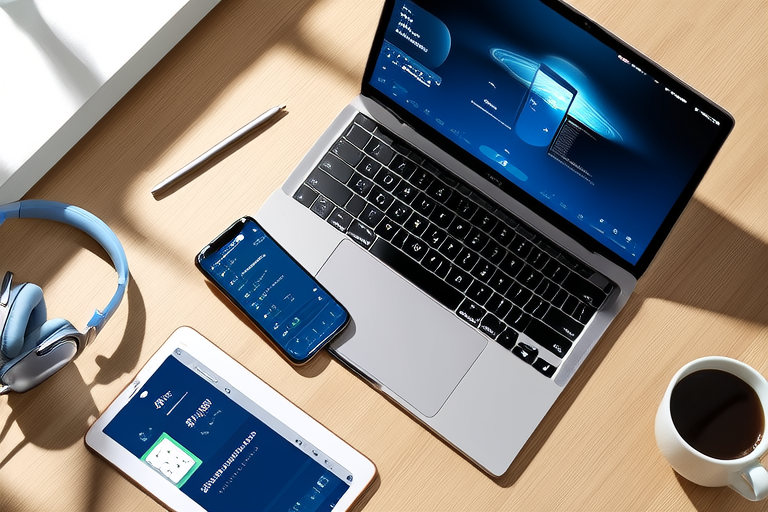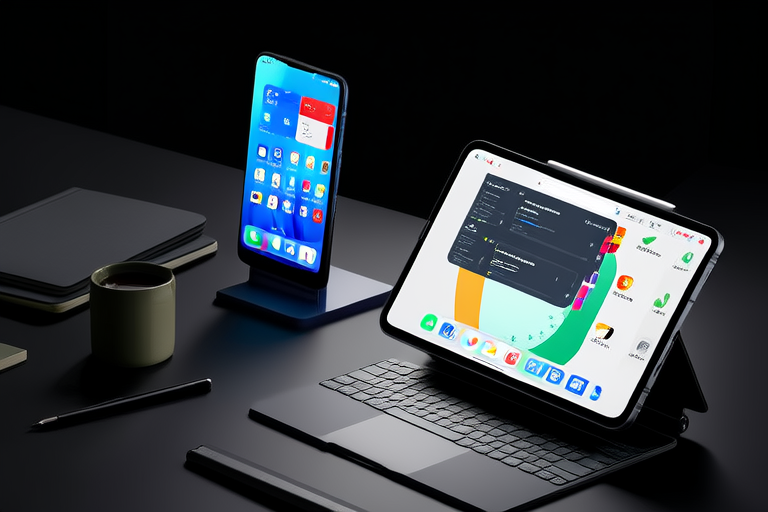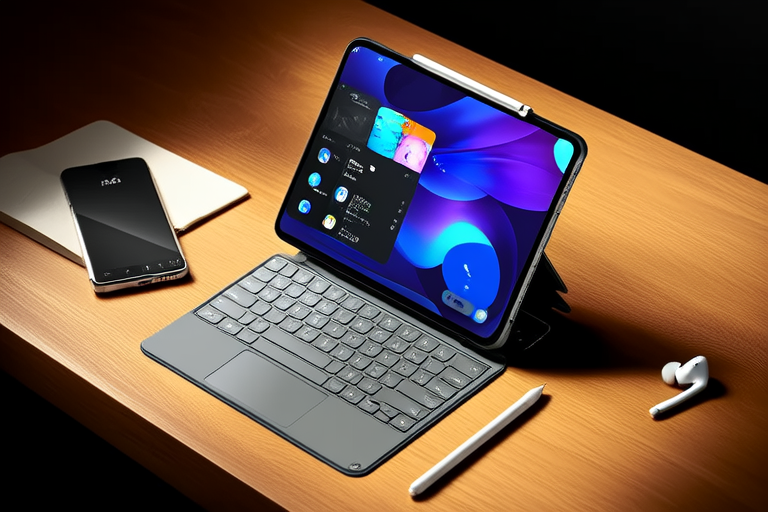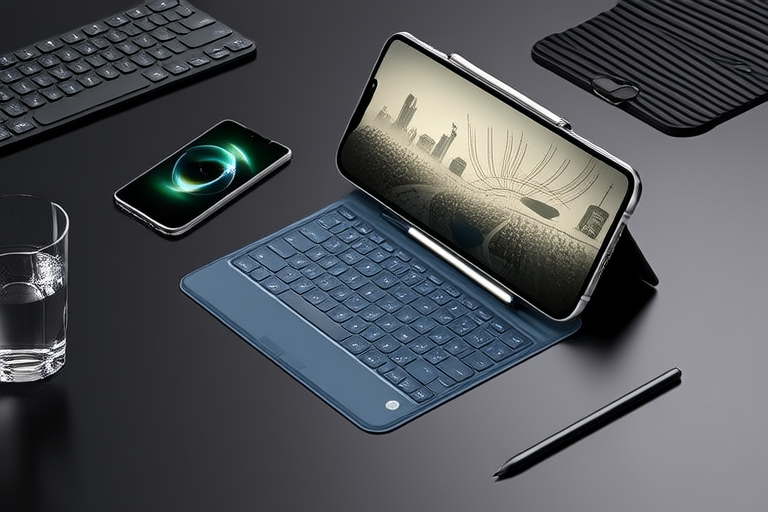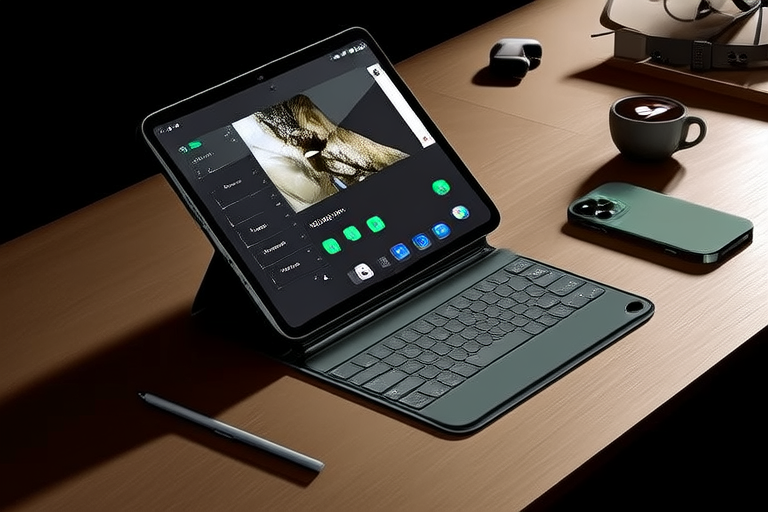“`html
Mastering Productivity with Modern Smartphones and Tablets
Introduction
In today’s fast-paced world, productivity is more important than ever. Whether you’re a student, a professional, or an entrepreneur, staying ahead often means finding ways to manage your time and resources more efficiently. Smartphones and tablets have emerged as indispensable tools in this quest for productivity. These devices offer powerful hardware and intuitive software that enable users to accomplish tasks on the go, making them ideal for busy individuals who need to stay connected and productive at all times.
This article explores how modern smartphones and tablets can be leveraged to enhance productivity. From understanding the key features that make these devices so effective to learning about essential apps and tools, we’ll cover everything you need to know to maximize your efficiency. Additionally, we’ll discuss tips for optimizing your workflow, integrating devices with other services, and looking ahead to future trends that promise even greater productivity gains.
Key Features of Modern Smartphones and Tablets
The rapid advancement of smartphone and tablet technology has led to the development of highly capable devices that cater specifically to productivity needs. Below are some of the most significant hardware and software features that contribute to their effectiveness:
Advanced Hardware Features
- Powerful Processors: Modern smartphones and tablets are equipped with high-performance processors that handle multiple tasks simultaneously without lag. This ensures smooth operation even when running resource-intensive applications.
- High-Resolution Displays: Clear and vibrant displays make it easier to read text, view graphics, and interact with touch-sensitive interfaces.
- Improved Cameras: High-quality cameras allow for quick documentation of ideas, meetings, or projects, ensuring nothing is missed.
Software Advancements
- User-Friendly Operating Systems: User-friendly operating systems like Android and iOS provide intuitive interfaces that simplify navigation and task management.
- Cloud Integration: Built-in support for cloud services such as Google Drive, Dropbox, and OneDrive allows seamless access to files from anywhere.
- Multitasking Capabilities: Many modern devices support split-screen views and floating windows, enabling users to perform multiple tasks simultaneously.
Essential Productivity Apps and Tools
To fully harness the power of smartphones and tablets, it’s essential to use the right apps and tools. Below are some of the most useful applications across various categories:
Task Management and Calendar Apps
- Trello: A versatile tool for creating boards, lists, and cards to organize tasks and projects visually.
- Google Calendar: An easy-to-use calendar app that integrates with other Google services for seamless scheduling.
Email and Document Management
- Gmail: A robust email client that supports attachments, labels, and filters for efficient communication.
- Microsoft Word & Excel: Popular office suites that allow for document creation, editing, and spreadsheet management.
Specialized Apps for Different Professional Fields
- Asana: Ideal for project management teams, Asana helps track progress, assign tasks, and collaborate on projects.
- Adobe Photoshop Express: A lightweight version of Photoshop for photo editing and retouching.
- GitHub: A platform for developers to host and manage code repositories, collaborate on projects, and track changes.
Tips for Maximizing Productivity
While having the right tools is crucial, maximizing productivity also requires adopting effective strategies. Here are some practical tips to help you get the most out of your smartphone or tablet:
Organizing Digital Files
Keep your files organized by using folders and naming conventions that make it easy to find what you need quickly. Consider using cloud storage solutions like Google Drive or Dropbox for backup and remote access.
Setting Reminders
Use built-in reminder apps or third-party tools to set alerts for important deadlines, meetings, and appointments. This helps ensure nothing falls through the cracks.
Effective Multitasking
Leverage multitasking features such as split-screen mode or floating windows to handle multiple tasks simultaneously. For example, you could review an email while drafting a report.
Optimizing Battery Life
To extend battery life, turn off unnecessary notifications, reduce screen brightness, and use power-saving modes when needed. Additionally, avoid keeping apps open in the background unless they’re actively required.
Minimizing Distractions
Limit distractions by silencing non-essential notifications and setting specific times for checking social media or personal messages. Focus on one task at a time to maintain concentration.
Integration with Other Devices and Services
Smartphones and tablets can be integrated with other devices and services to create a cohesive workflow. Below are some ways to achieve this:
Synching with Computers
Sync your smartphone or tablet with your computer to share files, transfer data, and maintain consistent backups. Use cloud services to ensure all devices have access to the same information.
Connecting with Smartwatches
Many smartwatches can sync with smartphones, allowing you to receive notifications, control music playback, and track fitness goals directly from your wrist.
Utilizing Cloud Services
Cloud services such as Google Drive, Dropbox, and Microsoft OneDrive enable real-time collaboration and access to files from any device with an internet connection.
Future Trends in Mobile Productivity
The landscape of mobile productivity is constantly evolving, with new technologies promising even greater capabilities. Below are some emerging trends that could shape the future:
Foldable Screens
Foldable screens offer the flexibility to switch between phone and tablet modes, providing larger display areas for more immersive experiences.
Augmented Reality (AR)
AR can enhance productivity by overlaying digital information onto the physical world, facilitating interactive presentations, virtual training sessions, and hands-free operations.
Artificial Intelligence (AI)
AI-powered assistants can automate routine tasks, suggest optimal workflows, and provide personalized recommendations based on user behavior.
Conclusion
Modern smartphones and tablets are powerful tools that can significantly boost productivity. By leveraging advanced hardware, utilizing essential apps and tools, adopting effective strategies, and integrating with other devices and services, you can streamline your workflow and stay ahead in today’s competitive environment.
We encourage you to explore and experiment with new tools and techniques to find what works best for you. With the right approach, you can unlock your full potential and achieve greater success in both personal and professional endeavors.
“`
